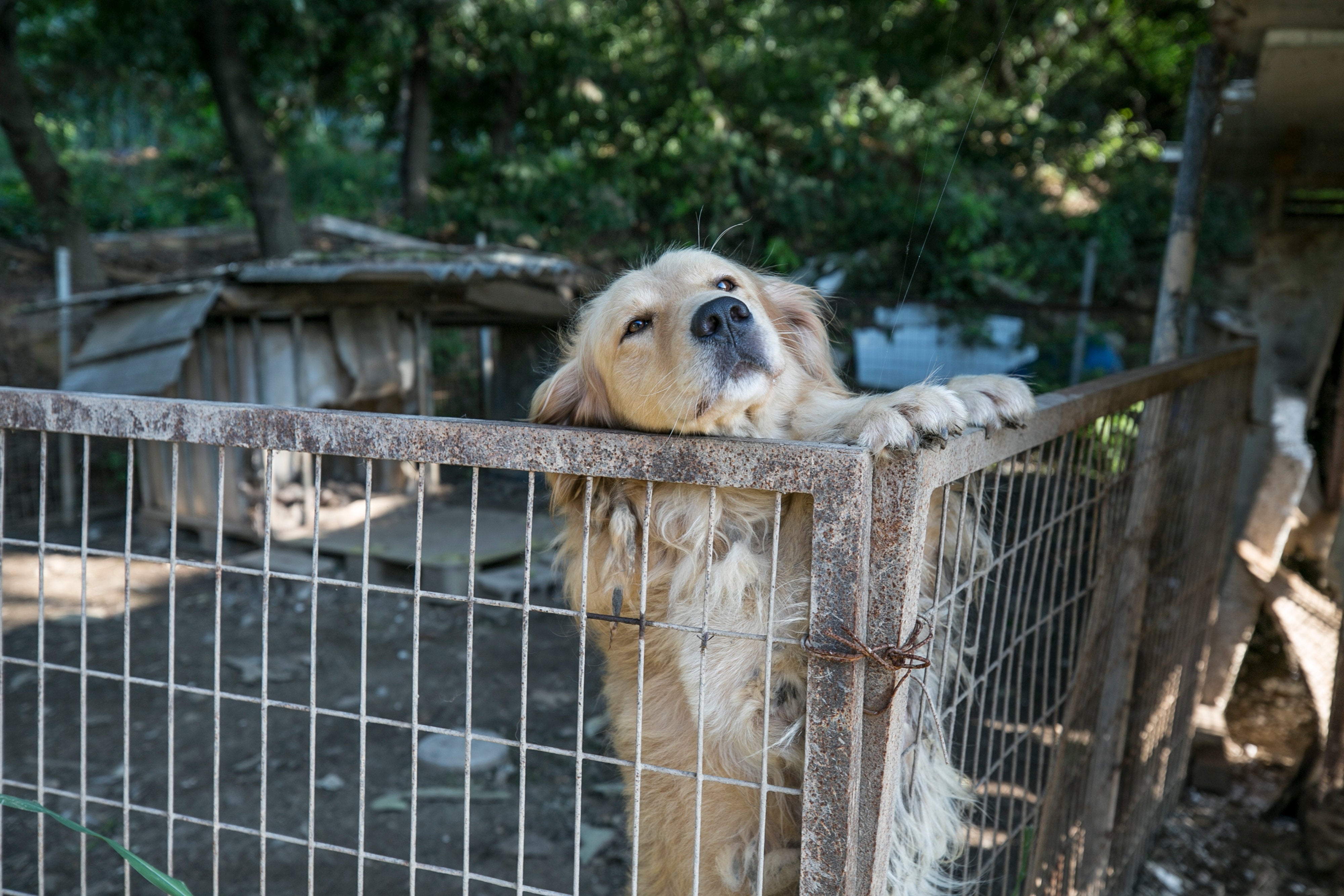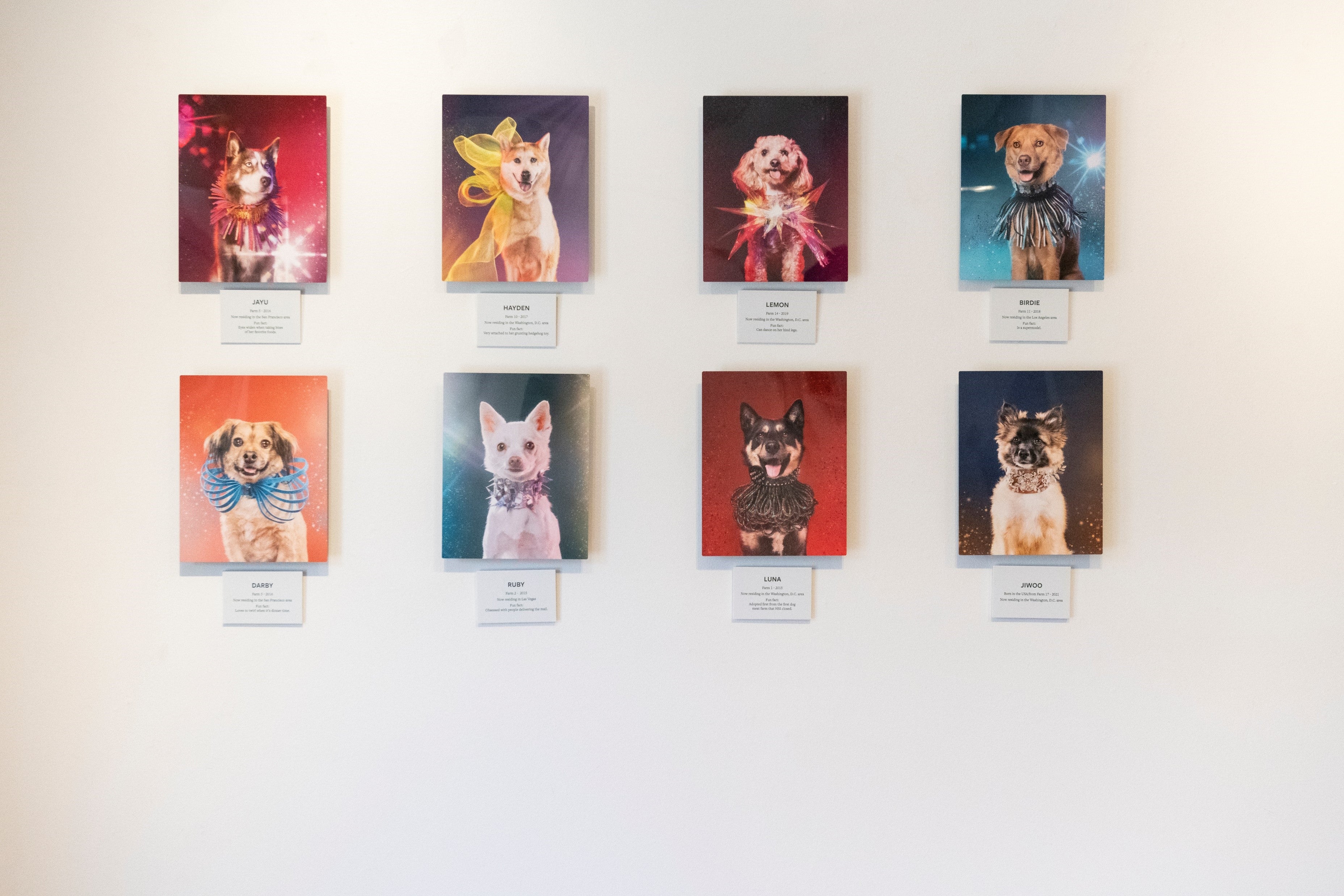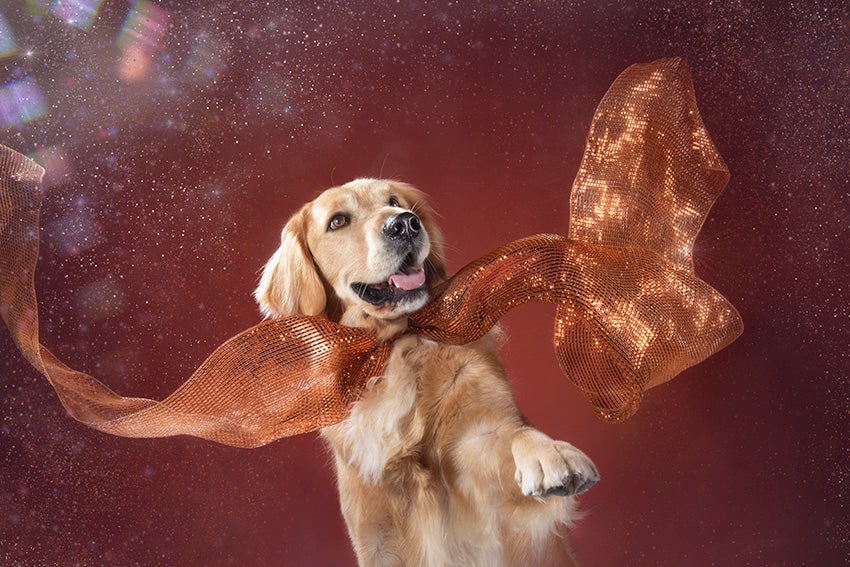Not so long ago, for a golden retriever now known as Chewbacca (nicknamed Chewy), the whole world was the small, dirty space inside the four wire sides of his pen. The first five years of Chewy’s life were spent on a dog meat farm in South Korea.
But Chewy was lucky. The farmer favored him and so passed him over time and again when it was time for slaughter. Then, in 2019, Humane Society International worked with the farmer to shut down the dog meat farm for good and help the farmer transition to a different way of making a living.

Flash forward to today, and we find Chewy not only enjoying a loving home with HSI President Jeff Flocken and his family but donning an intricate collar as a canine model for award-winning photographer, artist and dog advocate Sophie Gamand, whose new project shows dog meat farm survivors in a stunning new light.
Gamand says that a dog collar is like a wedding ring: It represents a commitment, a promise. And that kind of sharp perception of what we owe to animals is why I’m so honored that she chose to photograph a series of portraits of survivors of South Korea’s dog meat farms, constructing handmade collars for the shoot as a symbol of the dogs’ journeys from farm cages to loving families. These are arresting portraits of individuals who have experienced the polar extremes of the canine experience. They are beautiful artworks in their own right—and not only that: The images will also help raise public awareness across South Korea about dog meat farming and our campaign to end the dog meat industry in that country.
Changing people’s minds with the click of a shutter isn’t new for Gamand, whose previous series, Pit Bull Flower Power, depicts pit bull-type dogs as loving, generous and sensitive animals and helped get many of them adopted. Survivors of the Dog Meat Trade portrays over 40 dogs of different breeds and sizes, and the images aim to change public perceptions, influence policymakers and build national and international momentum in support of our campaign to end the dog meat trade.

This project is especially close to my heart, as I’ve been on the ground of dog meat farms in South Korea. I’ve seen the rows and rows of wire cages, containing dog after dog after dog. I’ve witnessed how the trauma of these intensive breeding facilities affects dogs differently—some jump up frantically and wag their tails whenever anyone walks by; others remain huddled in the corners of their cages, too afraid to even make eye contact. I’ve heard the eerie silence punctured by whimpers and intermittent barks.

I stand in continual awe of our staff who head into these farms to negotiate with farmers, shut down the farms and rescue and rehabilitate the dogs, transforming them from sometimes broken souls to happy, trusting pups.
Like so many of these dogs, Chewy had an arduous recovery. He had a terrible case of heartworm, which took several months to resolve after he arrived at his new home. He was also very on edge and excitable: He barked throughout the night, jumped on new people to the point of tearing their clothes and chased the family’s cat around the house. It took a behavioral specialist and the steady love and devotion of his family; today Chewy is a very calm, happy—and clearly quite photogenic—dog.

All dogs deserve a chance to be part of a loving family. We won’t rest until these farms are shuttered for good, and no more dogs will be locked inside, denied the opportunity to live full, happy lives.
The Survivors of the Dog Meat Trade portrait series is available for public view through June 9 at Hamilton-Selway Fine Art in West Hollywood, California.
You can join us in the fight to end the dog meat trade.
Follow Kitty Block on Twitter @HSUSKittyBlock.



